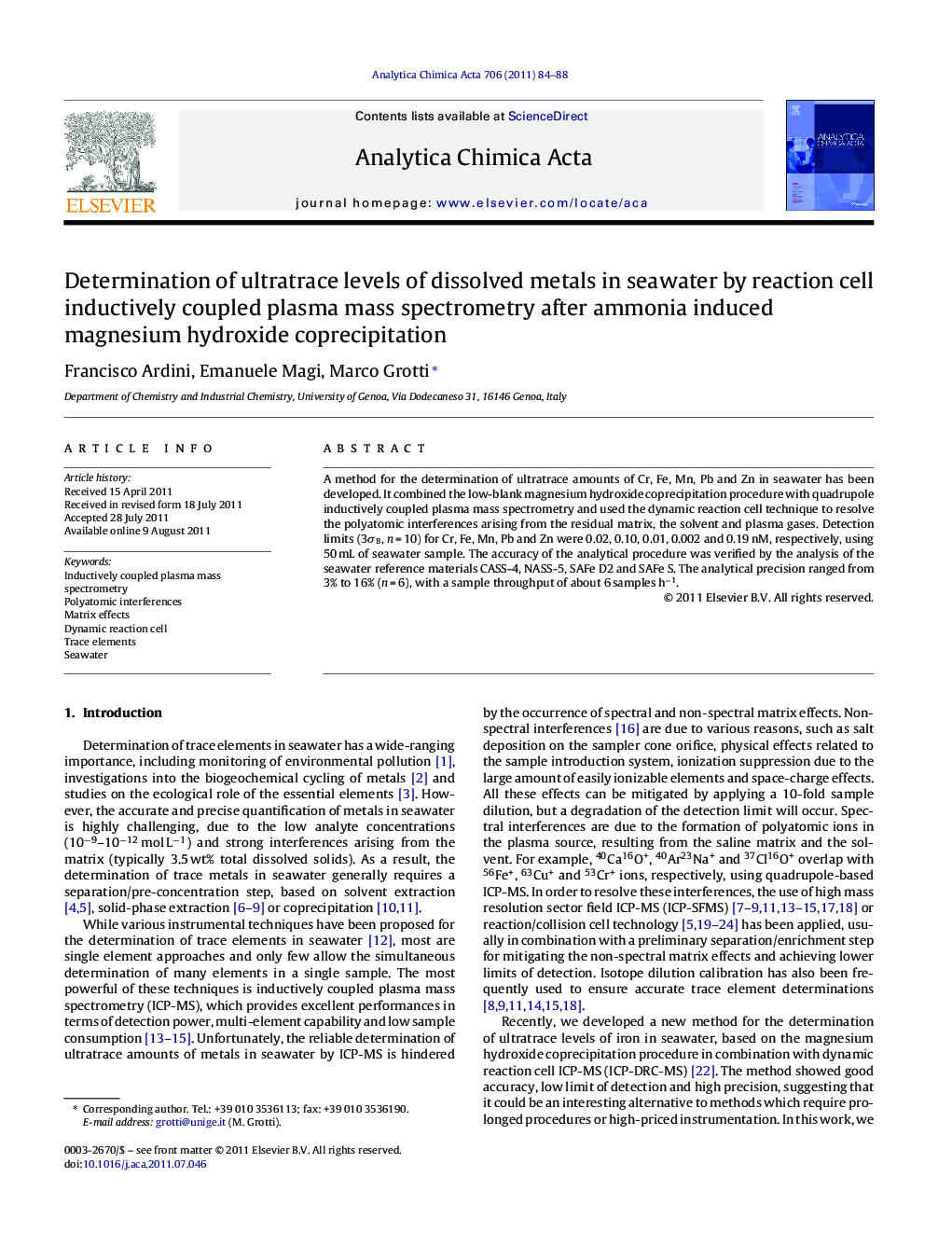| Article ID | Journal | Published Year | Pages | File Type |
|---|---|---|---|---|
| 1166494 | Analytica Chimica Acta | 2011 | 5 Pages |
A method for the determination of ultratrace amounts of Cr, Fe, Mn, Pb and Zn in seawater has been developed. It combined the low-blank magnesium hydroxide coprecipitation procedure with quadrupole inductively coupled plasma mass spectrometry and used the dynamic reaction cell technique to resolve the polyatomic interferences arising from the residual matrix, the solvent and plasma gases. Detection limits (3σB, n = 10) for Cr, Fe, Mn, Pb and Zn were 0.02, 0.10, 0.01, 0.002 and 0.19 nM, respectively, using 50 mL of seawater sample. The accuracy of the analytical procedure was verified by the analysis of the seawater reference materials CASS-4, NASS-5, SAFe D2 and SAFe S. The analytical precision ranged from 3% to 16% (n = 6), with a sample throughput of about 6 samples h−1.
Graphical abstractAccurate quantification of trace elements in open ocean waters was obtained by combining the Mg(OH)2 coprecipitation procedure with quadrupole ICP-MS and using the dynamic reaction cell to remove the residual interferences.Figure optionsDownload full-size imageDownload as PowerPoint slideHighlights► A new method for the determination of ultratrace amounts of Cr, Fe, Mn, Pb and Zn in seawater has been developed. ► Polyatomic interferences have been successfully reduced by the application of the dynamic reaction cell. ► Blanks, detection limits and accuracy were adequate for reliable determination of trace elements in open-ocean waters. ► Analytical figures were better than most of quadrupole ICP-MS methods, approaching those of ICP-SFMS.
